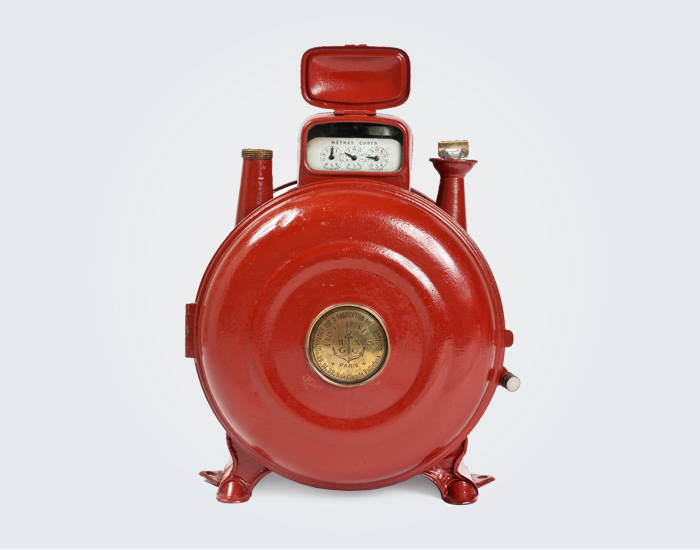Contador de demostración de tipo hidráulico
Manufactured by Compagnie pour la Fabrication des Compteurs et Matériel d’Usines à GazParís early’s. XX century
Polychromate and brass steel
Registry number: CN 109
Photography: Demo Counter
Photographer: Dani Rovira
© Museo del Gas de la Fundación Gas Natural Fenosa, 2017
When gas reached homes in the early 20th century, devices were created to measure the gas consumption of the subscribers. The first device of this kind, which was invented by Englishman Samuel Clegg in 1815, had problems with sealing and produced continual fluctuations in the flames of the gas appliances.To address these issues, a new drum-shaped device was created, which was submerged in water to a certain point and divided into four compartments that were continuously filling up and emptying.
Inside these compartments, the gas pressure made them roll and activate some gears that transmitted the units of measurement to calculate the customer’s gas consumption. Despite this, this model and others that followed still did not have a simple calculation system. This is why the manufacturers created display devices such as this one, which has been preserved in the Gas Natural Fenosa Foundation Gas Museum. This type of device was used in shops and homes to check how efficient and accurate energy consumption was.
The device shown in this article was the hydraulic sort and was manufactured in Paris by the Compagnie pour la Fabrication des Compteurs et Matériel d’Usines à Gaz, one of the most important companies in the gas sector of France at the time.
